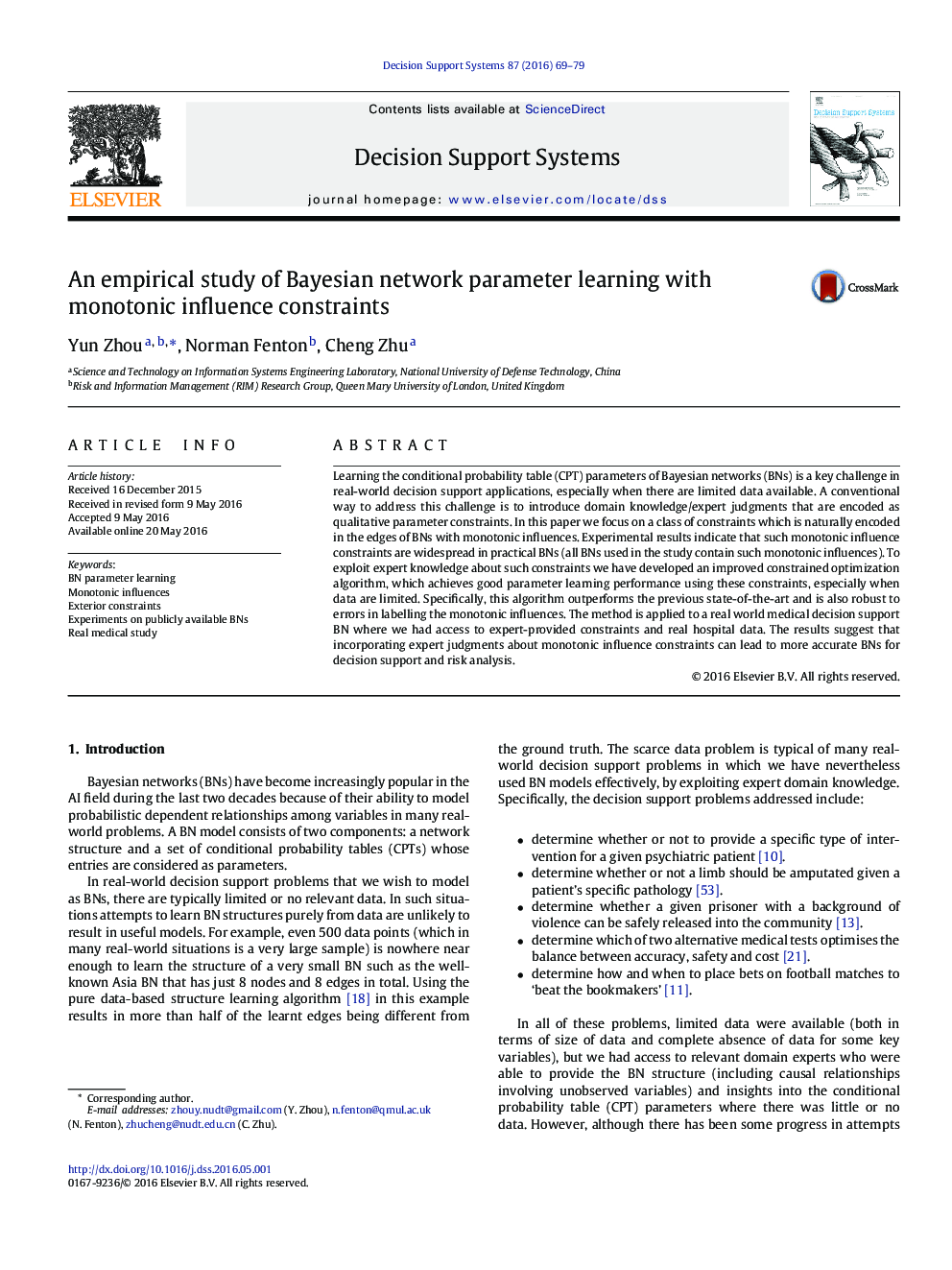| Article ID | Journal | Published Year | Pages | File Type |
|---|---|---|---|---|
| 554605 | Decision Support Systems | 2016 | 11 Pages |
•Exterior parameter constraints are naturally encoded in the edges of BNs with monotonic influences.•To exploit such constraints we have developed an improved constrained optimization algorithm (COFP).•An empirical study simulating real-world expert judgments combined with limited data has been carried out on 12 publicly available BNs.•The developed algorithm is applied to a real medical case study, where the real expert elicited monotonic influences and hospital dataset are provided.•Results show that COFP achieves improved parameter learning performance compared to previous state-of-the-art methods.
Learning the conditional probability table (CPT) parameters of Bayesian networks (BNs) is a key challenge in real-world decision support applications, especially when there are limited data available. A conventional way to address this challenge is to introduce domain knowledge/expert judgments that are encoded as qualitative parameter constraints. In this paper we focus on a class of constraints which is naturally encoded in the edges of BNs with monotonic influences. Experimental results indicate that such monotonic influence constraints are widespread in practical BNs (all BNs used in the study contain such monotonic influences). To exploit expert knowledge about such constraints we have developed an improved constrained optimization algorithm, which achieves good parameter learning performance using these constraints, especially when data are limited. Specifically, this algorithm outperforms the previous state-of-the-art and is also robust to errors in labelling the monotonic influences. The method is applied to a real world medical decision support BN where we had access to expert-provided constraints and real hospital data. The results suggest that incorporating expert judgments about monotonic influence constraints can lead to more accurate BNs for decision support and risk analysis.
